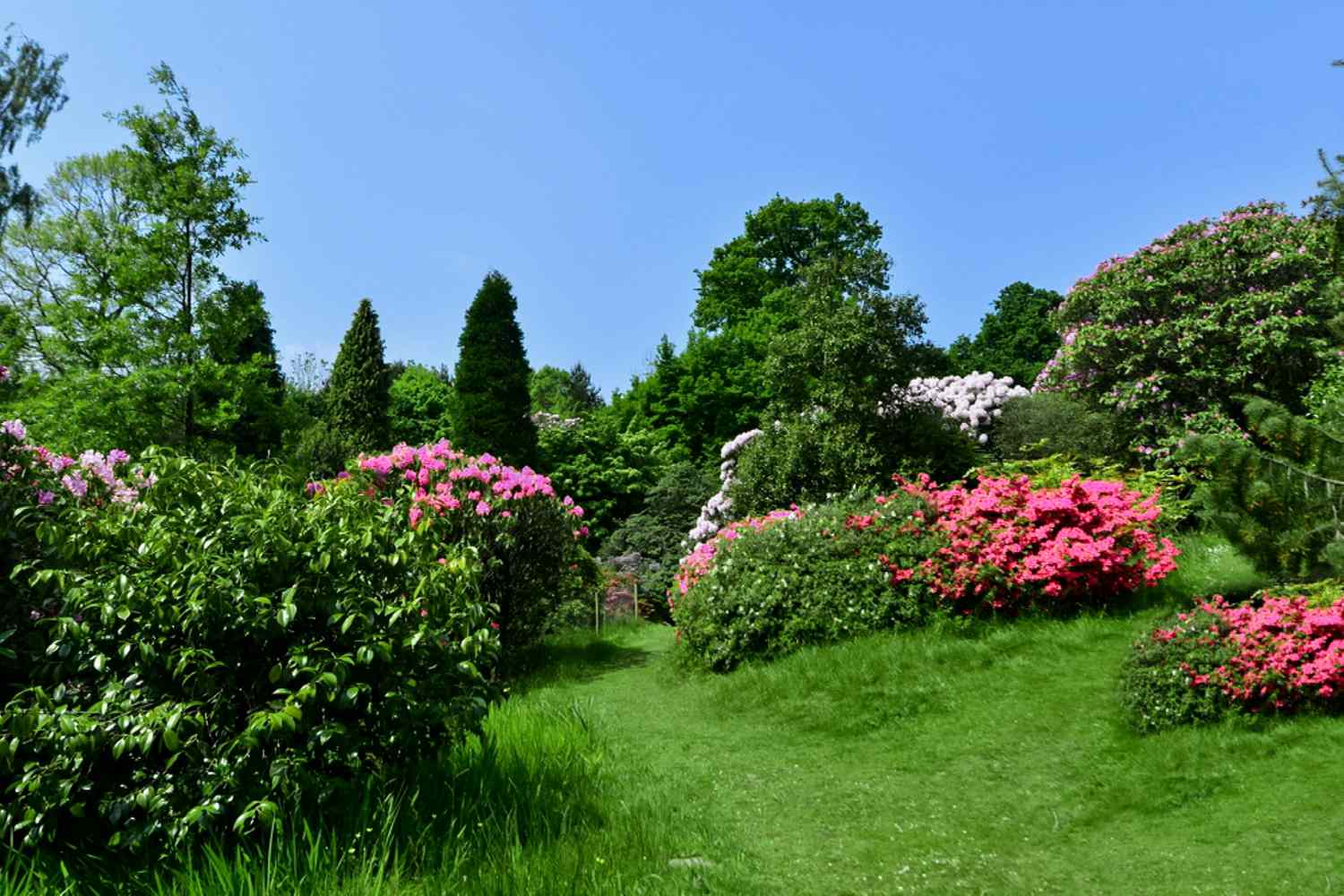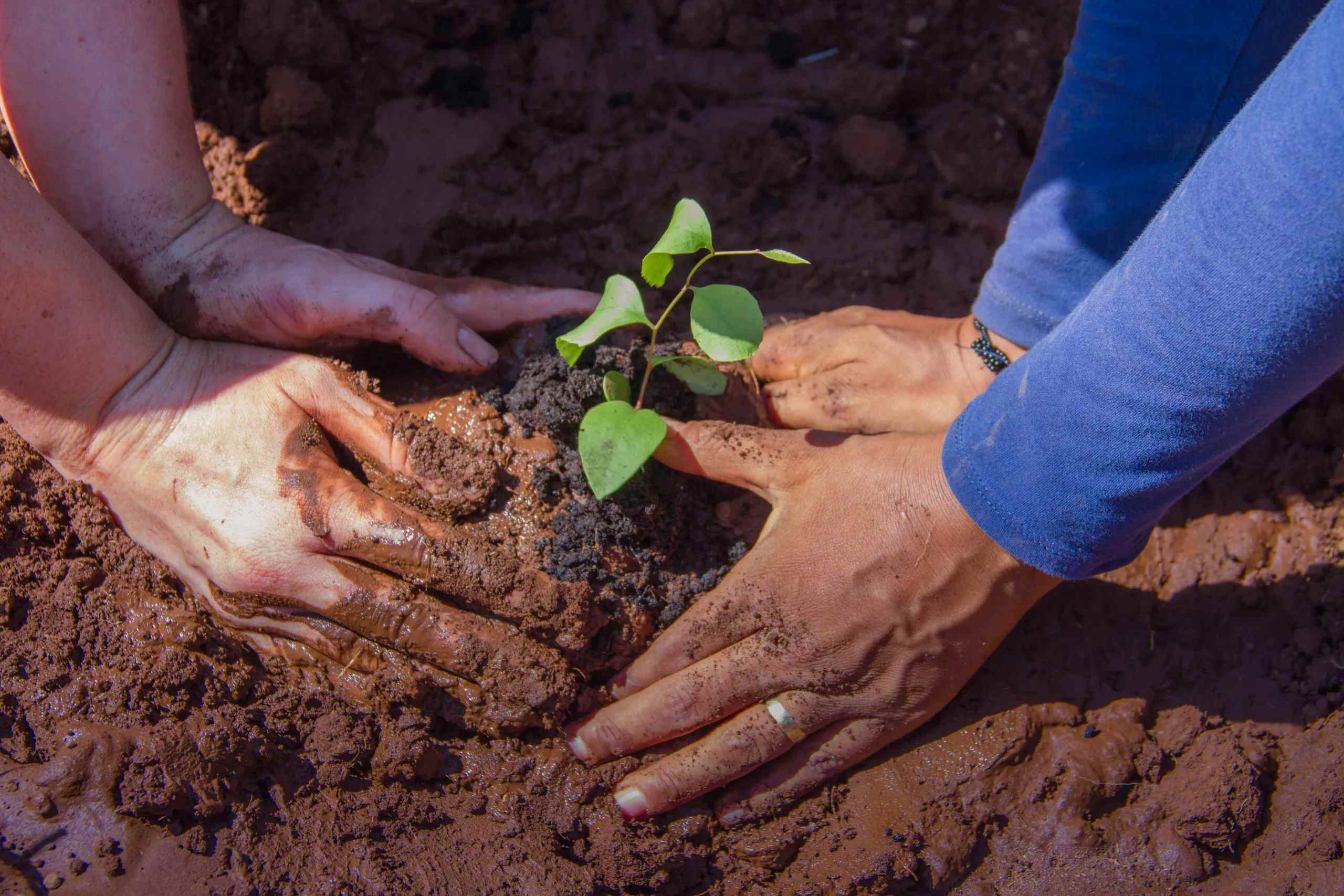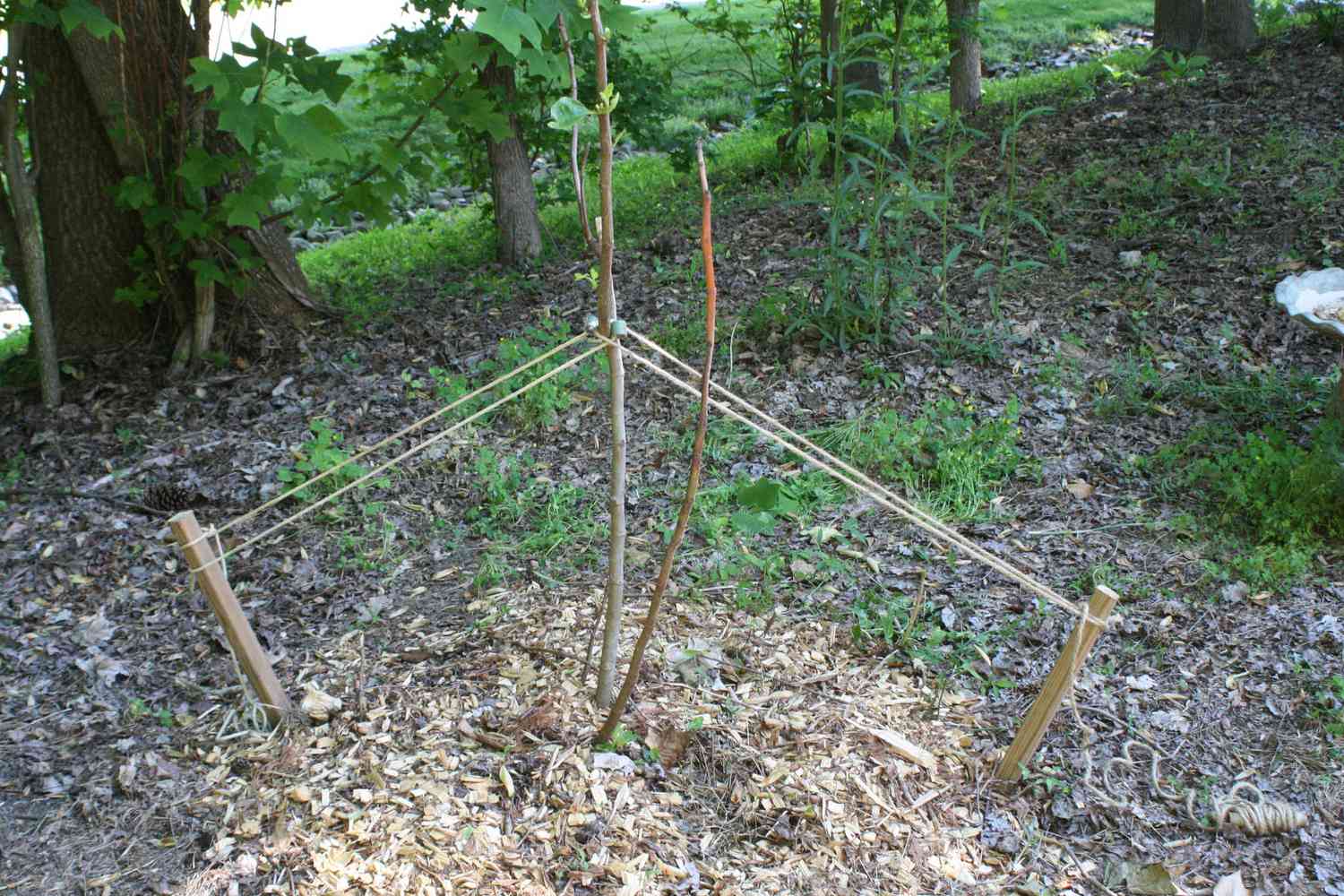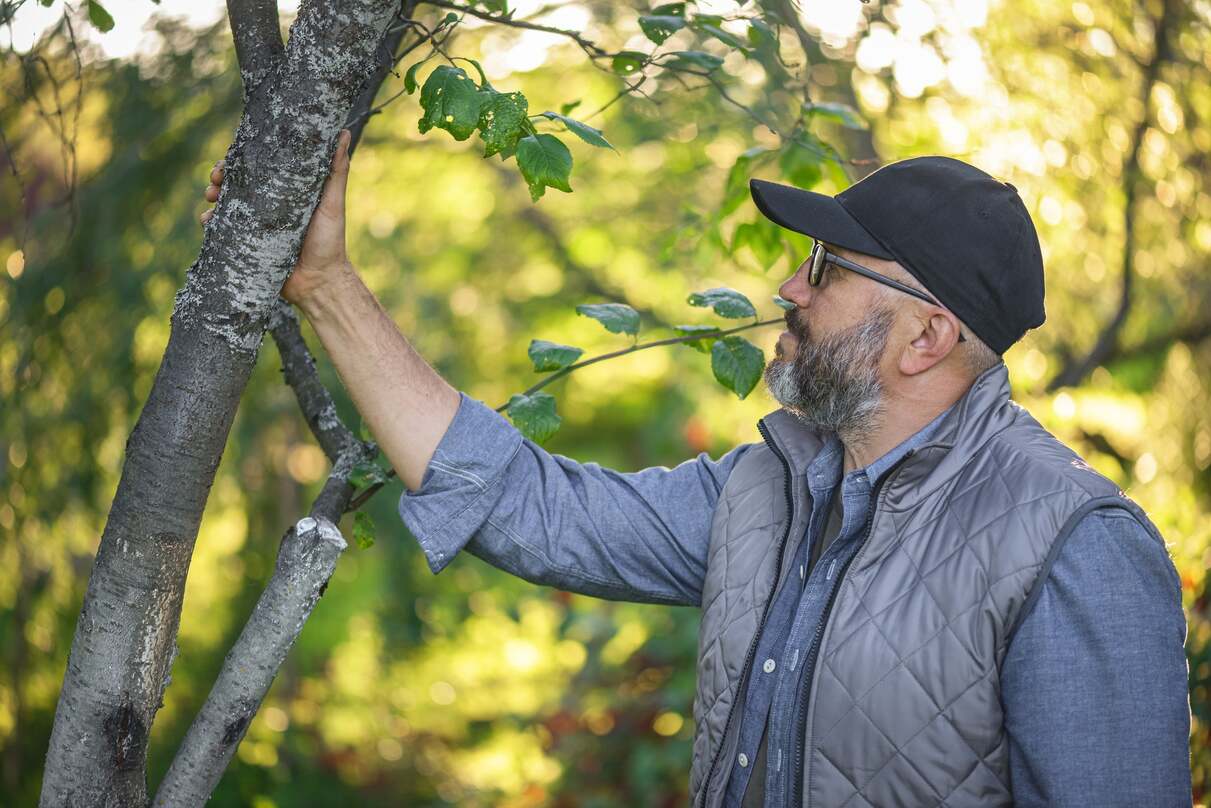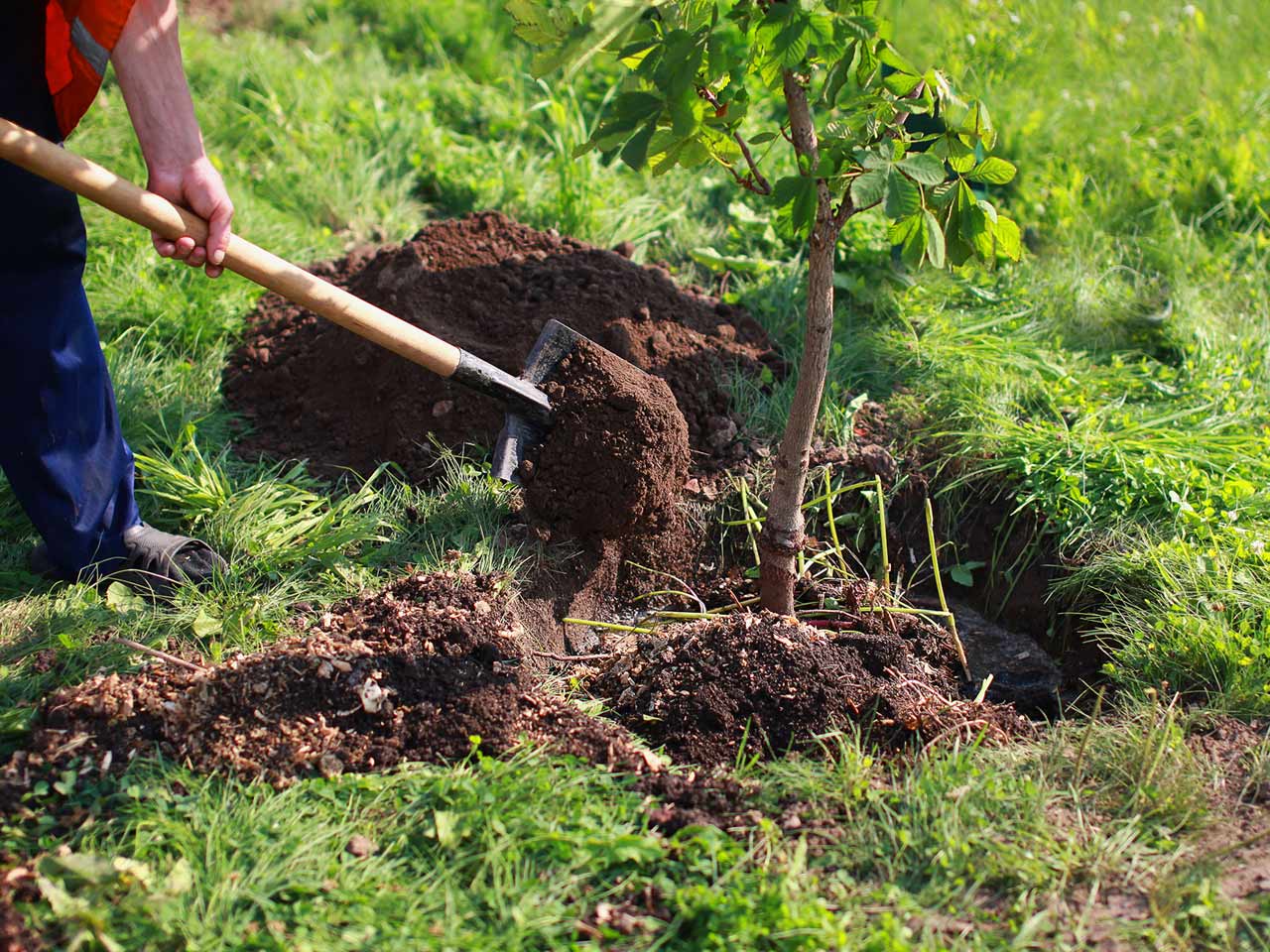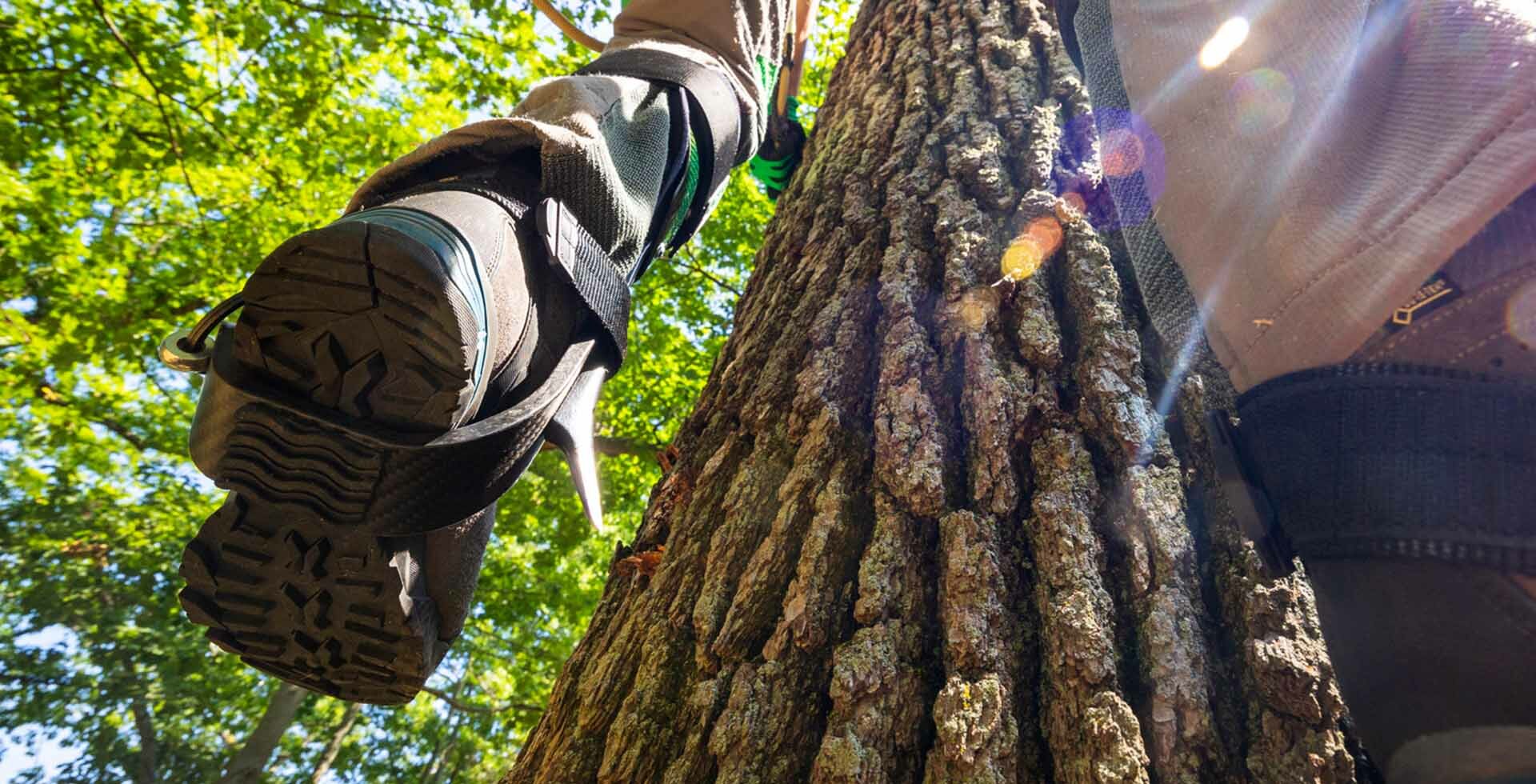Home>Garden Design>Planning Your Garden>How To Identify Birch Trees
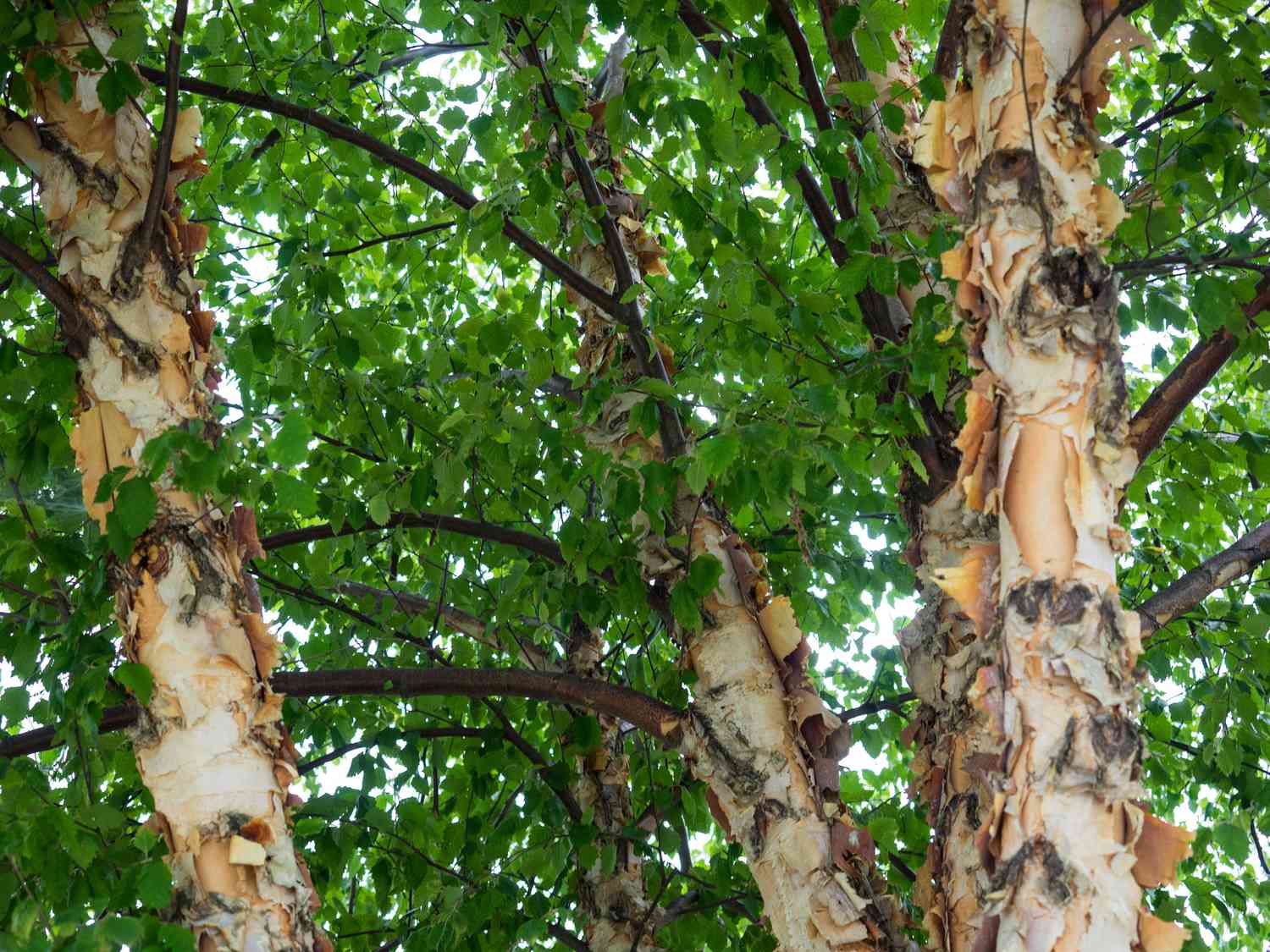

Planning Your Garden
How To Identify Birch Trees
Published: October 25, 2023
Learn how to identify birch trees and incorporate them into your garden planning. Discover tips, techniques, and benefits for adding these beautiful trees to your outdoor space.
(Many of the links in this article redirect to a specific reviewed product. Your purchase of these products through affiliate links helps to generate commission for Chicagolandgardening.com, at no extra cost. Learn more)
Table of Contents
Introduction
Welcome to this guide on how to identify birch trees. Whether you are an avid nature enthusiast, a botany student, or simply curious about the natural world around you, being able to identify different tree species is a rewarding skill to have. Birch trees are particularly fascinating due to their unique characteristics and widespread distribution. In this article, we will explore the key features and methods to identify birch trees.
Birch trees belong to the genus Betula and are known for their slender trunks, distinctive bark, and delicate leaves. They are deciduous trees that can range in size from small shrubs to tall, stately trees. The birch family is diverse, comprising numerous species found across various habitats and regions around the world.
Identifying birch trees can be accomplished through a combination of observing their leaves, bark, twigs, flowers, and seeds. Each of these features offers valuable clues that can help distinguish birch trees from other tree species. Understanding the unique characteristics of birch trees will not only enhance your knowledge of the natural world but also allow you to appreciate their beauty and ecological importance.
In the following sections, we will delve into the specific characteristics of birch trees, discuss their habitat and range, examine similar species, and provide identification tips. By the end of this guide, you will have a solid understanding of how to recognize and identify birch trees, and you will be able to confidently explore the world of these remarkable trees.
Characteristics of Birch Trees
Birch trees possess several unique characteristics that make them easily identifiable. Understanding these features will greatly assist in successfully identifying birch trees:
- Leaves: Birch tree leaves are simple and alternate, meaning they grow on both sides of the stem in an alternating pattern. The leaves are generally oval-shaped with serrated or toothed edges. Some commonly found birch tree species have triangular or heart-shaped leaves. The leaves are typically bright green in summer and turn yellow or golden in autumn.
- Bark: One of the most distinctive features of birch trees is their bark. Birch bark is thin, smooth, and often peels in thin layers or papery curls. The color of the bark can vary depending on the species, ranging from white to silver-gray and even reddish-brown. This unique bark texture and coloration make birch trees easily recognizable.
- Twigs: Birch tree twigs are slender and often have small, horizontal lenticels (pores) that add to their distinctive appearance. The twigs are typically reddish-brown or brownish-gray in color. These slender twigs combined with the papery bark create an elegant aesthetic characteristic of birch trees.
- Flowers and Catkins: Birch trees produce both male and female flowers on the same tree. The male flowers are called catkins and hang down from the branches, resembling long, cylindrical clusters. The female flowers are smaller and appear as upright, cone-like structures. The flowers are typically yellowish or greenish in color and are an important feature in identifying birch trees.
- Seeds and Seed Dispersal: Birch trees produce small winged seeds known as samaras or “helicopter seeds.” These seeds are dispersed by the wind and can travel considerable distances from the parent tree. The presence of these distinctive seeds can be helpful in identifying birch trees and differentiating them from other tree species.
By familiarizing yourself with these key characteristics, you will be able to recognize birch trees with ease. As we continue our exploration, we will delve into birch tree leaves, bark, twigs, flowers, and seeds in more detail, providing you with the necessary knowledge to identify birch trees accurately.
Leaves
The leaves of birch trees are an essential characteristic to consider when identifying these trees. They exhibit distinctive features that set them apart from other species:
Birch tree leaves are simple and alternate, meaning they grow on both sides of the stem in an alternating pattern. The leaves are typically oval-shaped, ranging in size from 1 to 3 inches long. However, some birch species have unique leaf shapes, such as triangular or heart-shaped leaves. The edges of the leaves are serrated or toothed, providing an added texture to their appearance.
When it comes to color, birch leaves are bright green during the summer months, adding a vibrant touch to the tree’s overall appearance. In the autumn, as the seasons change, birch leaves undergo a stunning transformation. They turn from green to shades of yellow or golden, enhancing the beauty of the tree and the surrounding landscape.
An interesting characteristic of birch leaves is their fluttering movement in the wind. The leaves have long petioles (leaf stalks), which allows them to sway gracefully even with the slightest breeze. This gentle rustling sound and movement are unique to birch trees and add to their appeal.
Another noteworthy aspect of birch tree leaves is their size variation among different species. Some birch trees, like the paper birch (Betula papyrifera), have larger leaves compared to the dwarf birch (Betula nana), which has smaller leaves. Therefore, leaf size can be an additional clue to identifying specific birch tree species.
When attempting to identify birch trees based on their leaves, it is important to consider their overall shape, serrations on the edges, leaf arrangement, and color variations throughout the seasons. Paying attention to these leaf characteristics will significantly assist you in correctly identifying birch trees and distinguishing them from other tree species in your surroundings.
Bark
The bark of birch trees is one of their most distinctive features and can be a key factor in identifying them. Here are some characteristics of birch tree bark to look out for:
Birch bark is thin and often peels, creating a unique papery texture. The color of the bark can vary depending on the specific birch species and the age of the tree. Younger birch trees typically have smoother and lighter-colored bark, ranging from white to silver-gray. As the tree matures, the bark can develop darker hues of reddish-brown or brownish-gray.
One notable aspect of birch bark is its ability to peel in thin layers or curls. This peeling characteristic is often referred to as exfoliating bark. As the outer layers peel away, they reveal the lighter-colored layers underneath, creating an eye-catching contrast. This peeling bark provides a visually appealing feature that makes birch trees easily recognizable.
The peeling bark not only adds to the aesthetic appeal of birch trees but also serves as a protective and adaptive feature. The thin layers help to protect the tree’s inner layers from harsh weather conditions and potential pests. Additionally, the peeling bark allows the tree to shed any accumulated debris or moss, ensuring the health and vitality of the tree.
Another important aspect of birch bark is its texture. When you touch the bark of a birch tree, you will notice it feels smooth, almost like satin. This smooth texture sets birch trees apart from other tree species that may have rough or deeply furrowed bark.
It’s important to note that not all birch trees have the characteristic peeling bark. Some species, such as the river birch (Betula nigra), have a more rugged and flaky bark, while others, like the Himalayan birch (Betula utilis), have a smooth bark texture without the peeling characteristic. However, in general, the papery and peeling bark is a hallmark of most birch tree species.
By observing the color, texture, and peeling nature of the bark, you can identify birch trees with confidence. The unique bark of birch trees adds to their overall charm and helps them stand out among other tree species. So, next time you spot a tree with smooth, peeling bark in shades of white, silver, or reddish-brown, there’s a good chance you’ve identified a beautiful birch tree.
Twigs
The twigs of birch trees offer valuable clues for their identification. Here are some important characteristics to consider when examining birch tree twigs:
Birch tree twigs are slender and have a distinctive appearance. They are often reddish-brown or brownish-gray in color. The slender nature of the twigs adds to the graceful and delicate aesthetic of birch trees.
One noticeable feature of birch twigs is the presence of small, horizontal lines called lenticels. Lenticels are pores on the bark that allow for gas exchange between the tree’s internal tissues and the external environment. These lenticels add to the visual texture of the twig and are a characteristic feature of many birch tree species.
When examining the twigs, you may also notice small buds that indicate the growth points for future leaves and branches. Birch tree buds are small and pointed, often covered in scales. These buds can vary in color, ranging from reddish-brown to yellowish-brown, depending on the specific birch species.
Another interesting aspect of birch twigs is their flexibility. Due to their slender nature and supple structure, birch twigs are known to be flexible and bendable. This flexibility is advantageous during strong winds or heavy snowfall, as it allows the twigs to sway without breaking.
It’s important to note that while birch twigs share these common characteristics, there can be some variations among different species. Some birch trees, like the dwarf birch (Betula nana), have shorter and more densely packed twigs, while others, such as the silver birch (Betula pendula), have longer and more spread-out twigs.
By observing the color, texture, presence of lenticels, and the overall flexibility of the twigs, you can gain valuable insight into the identification of birch trees. The slender, flexible twigs with lenticels are unique to birch trees and serve as strong indicators of their presence in the natural landscape.
Flowers and Catkins
The flowers and catkins of birch trees not only add beauty to the landscape but also play a crucial role in their identification. Here are some key characteristics to consider when examining the flowers and catkins of birch trees:
Birch trees are monoecious, meaning both male and female flowers are present on the same tree. The male flowers are in the form of catkins, which are long, cylindrical clusters that hang down from the branches. Catkins are comprised of many individual flowers, each containing stamens that produce pollen. The catkins are typically yellowish or greenish in color and add an eye-catching element to the tree’s appearance.
The female flowers of birch trees are smaller and located higher up on the branches. These flowers are upright and cone-like in shape, with each containing ovules that can develop into seeds. The female flowers are typically shorter and more compact compared to the long, dangling catkins.
The timing of birch tree flowering can vary based on the species and environmental conditions. In general, birch trees bloom in the spring, usually before their leaves fully emerge. This early blooming period allows for efficient pollination and seed development during the growing season.
Observing the presence of flowers and catkins can be valuable in identifying birch trees. The combination of male catkins and female flowers on the same tree is a unique characteristic that sets birch trees apart from many other tree species.
It’s worth noting that not all birch tree species produce conspicuous flowers and catkins. Some species have less noticeable flowers or may even have separate male and female trees. However, the presence of catkins and cone-like flowers on a tree, particularly in the spring months, is a strong indication of a birch tree.
By observing the structure, color, and location of the flowers and catkins, you can confidently identify birch trees in your surroundings. The presence of these distinct features adds to the beauty and charm of these remarkable trees.
Seeds and Seed Dispersal
The seeds and their dispersal methods play a vital role in the life cycle of birch trees and can provide valuable clues for identification. Here’s what you need to know about the seeds and seed dispersal of birch trees:
Birch trees produce small, winged seeds known as samaras or “helicopter seeds.” These seeds are typically contained within small, papery capsules or bracts. The shape and size of the samaras can vary slightly depending on the specific birch species.
One of the fascinating aspects of birch tree seeds is their structure, which enables them to be dispersed by the wind. The samaras have a flattened, wing-like structure that catches the air currents as they fall from the tree. This aerodynamic design allows the seeds to travel considerable distances away from the parent tree.
As the wind blows, the spinning and rotating motion of the samaras resemble the flight of a helicopter, hence the nickname “helicopter seeds.” This unique seed dispersal mechanism helps birch trees colonize new areas and ensures the survival and spread of their offspring.
When it comes to seed production, birch trees tend to have abundant seed production, often resulting in large numbers of samaras on the tree during the seed-bearing season. The seeds are usually mature and ready for dispersal in late summer or early autumn.
Keep in mind that the presence of samaras can vary depending on the specific birch species. Some species may have larger or smaller samaras, or different shaped ones altogether. However, the general concept of wind dispersal through samaras remains consistent among birch trees.
By observing the presence of samaras and understanding their winged structure and wind dispersal capabilities, you can confidently identify birch trees. The unique seed dispersal method and the abundance of samaras are distinct characteristics of these remarkable trees.
Habitat and Range
Birch trees have a diverse habitat and range, thriving in various environments around the world. Understanding the typical habitats where birch trees are found can help in their identification. Here are some key points regarding the habitat and range of birch trees:
Birch trees are known for their adaptability and can be found in a wide range of habitats. They are commonly found in temperate regions of the Northern Hemisphere, including North America, Europe, and Asia. Different species of birch trees have adapted to specific environmental conditions, allowing them to grow in diverse habitats.
In terms of natural habitat, many birch tree species prefer moist, well-drained soils. They can be found growing near streams, rivers, wetlands, and other areas with sufficient moisture availability. However, birch trees also display a remarkable ability to tolerate a range of soil types, including sandy, loamy, and even clay soils.
The specific range of birch trees varies depending on the species. Some species, such as the native paper birch (Betula papyrifera) in North America, have a broad distribution across multiple biomes and can be found from the northern United States up to the Arctic Circle. Other species, like the Himalayan birch (Betula utilis), are native to the mountainous regions of Asia.
In addition to their native range, birch trees have also been cultivated in many parts of the world for their aesthetic appeal and ecological value. As a result, birch trees can be found in urban parks, gardens, and landscapes outside their natural range.
Birch trees have a remarkable ability to withstand cold temperatures, making them well-suited for colder climates. They are often associated with boreal forests and taiga ecosystems, where they form important components of the forest community.
Overall, birch trees have an extensive habitat and range, adapting to a variety of environments and growing conditions. By considering the typical habitats and regions where birch trees thrive, you can narrow down your search and identify these magnificent trees more effectively.
Similar Species
When identifying birch trees, it’s important to consider similar species that may share certain characteristics. Here are some tree species that may resemble birch trees and key differences to help distinguish them:
1. Alder Trees: Alder trees (genus Alnus) can look similar to birch trees due to their slender trunks and bark characteristics. However, alder trees have serrated leaves that are more rounded compared to the elongated, toothed leaves of birch trees. Additionally, alder trees typically grow in moist, wetland environments, while birch trees are found in various habitats.
2. Aspen Trees: Aspen trees (genus Populus) share similarities with birch trees, especially in their bark appearance. Both trees have light-colored bark that can peel or flake. However, aspen leaves are rounder in shape and lack the toothed edges typically seen in birch leaves.
3. Willow Trees: Some species of willow trees (genus Salix) may have similar slender trunks and bark texture to birch trees. However, willow leaves are typically long and narrow, with serrated edges. Willow trees are also often found in wetland or riparian areas, differentiating them from birch trees.
4. Cottonwood Trees: Cottonwood trees (genus Populus) can resemble birch trees due to their similar overall appearance and bark texture. However, cottonwood leaves are larger and more elongated than birch leaves, with a distinctive heart or triangle shape. Cottonwood trees are also often found near bodies of water.
4. Rowan Trees: Rowan trees (genus Sorbus) may have some similarities to birch trees in their slender trunks and bark characteristics. However, rowan leaves are compound and divided into leaflets, while birch leaves are simple and singular. Rowan trees often bear clusters of small berries, which can aid in their identification.
While these tree species may share certain visual characteristics with birch trees, paying attention to leaf shapes, bark textures, and typical habitat preferences will help differentiate them. Remember to consider the full range of features and compare them to the specific characteristics of birch trees to ensure accurate identification.
Identification Tips
Identifying birch trees can be an enjoyable and rewarding experience. Here are some helpful tips to assist you in correctly identifying these magnificent trees:
1. Observe the Leaves: Examine the shape, serrated edges, and arrangement of the leaves. Birch tree leaves are typically oval-shaped, with toothed margins, and grow in an alternating pattern along the branches.
2. Check the Bark: Look for peeling papery bark in colors ranging from white to reddish-brown. The thin, smooth bark with peeling layers is a distinctive feature of birch trees.
3. Examine the Twigs: Birch tree twigs are slender and often have horizontal lenticels (pores) on their surface. The reddish-brown or brownish-gray color of the twigs, along with their supple and flexible nature, are key characteristics.
4. Inspect the Flowers and Catkins: Look for hangings catkins and upright cone-like female flowers on the same tree. The yellowish or greenish color of the catkins and the presence of both male and female reproductive structures are strong indications of a birch tree.
5. Consider the Seeds: Note the presence and appearance of winged samaras or “helicopter seeds.” The flattened wing-like structure, combined with the wind dispersal method, is a unique feature of birch trees.
6. Pay Attention to Habitat: Birch trees can be found in a variety of habitats, including moist or well-drained soils and both urban and natural environments. Knowing the typical habitats where birch trees thrive can help narrow down your identification.
7. Compare with Similar Species: Be aware of other tree species that may resemble birch trees, such as alder, aspen, willow, cottonwood, or rowan trees. Pay attention to distinguishing characteristics like leaf shape, bark texture, and habitat preferences to accurately differentiate them.
8. Consult Field Guides and Resources: Utilize field guides, tree identification apps, or online resources to further enhance your knowledge and assist in identifying birch trees. These resources often provide detailed descriptions, images, and additional identification tips.
Remember that practice and patience are key to becoming proficient at identifying trees. It’s always helpful to observe and compare multiple characteristics to ensure accurate identification. By combining careful observation, knowledge of key features, and reference materials, you’ll be able to confidently identify birch trees and appreciate their beauty in the natural world.
Conclusion
In conclusion, identifying birch trees can be an engaging and rewarding endeavor. By familiarizing yourself with their distinctive characteristics such as leaves, bark, twigs, flowers, and seeds, you can confidently recognize and differentiate birch trees from other species.
The leaves of birch trees are typically oval-shaped with serrated edges, and they exhibit vibrant green colors in summer and turn golden in autumn. The bark is thin, smooth, and often peels in papery layers or curls, ranging in colors from white to reddish-brown. The slender twigs bear horizontal lenticels and reddish-brown or brownish-gray hues. Birch trees produce catkins that hang down from branches and cone-like female flowers, adding splashes of yellow or green to their appearance. The wind-dispersed samaras, or “helicopter seeds,” are another recognizable feature of these trees.
Consideration of habitat and range is also crucial in identifying birch trees. They are found in diverse environments, ranging from moist to well-drained soils, and they thrive in temperate regions of the Northern Hemisphere. While birch trees have a broad distribution, it is essential to examine specific regions and habitats to accurately identify them.
However, it is important to note that there are other tree species, such as alder, aspen, willow, cottonwood, and rowan, which may bear resemblances to birch trees. Careful observation and knowledge of key distinguishing characteristics will aid in correctly identifying birch trees.
By utilizing the information and tips provided in this guide, alongside additional resources such as field guides or online references, you can develop your skills in identifying birch trees with confidence. So go out and explore the beauty of nature, armed with your newfound knowledge, and enjoy unraveling the marvels of these remarkable birch trees.
